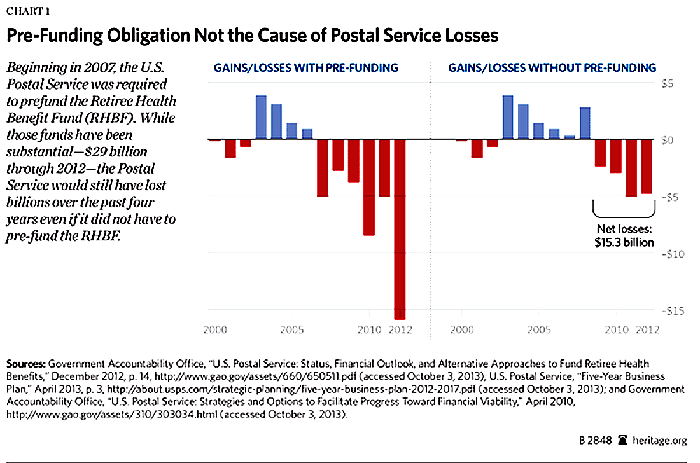
By Haddon Libby
The busiest days for the post office all year are December 18th and 19th. Package shipments which are up 12% from last year are some welcomed relief to the US Postal Service as they recently reported a $5.5 BILLION loss for their fiscal year-end September 30, 2014.
Along with that loss, Postmaster General Patrick Donahue announced his intent to retire after four years as the nation’s head letter carrier. His replacement, Megan Brennan, is currently Chief Operating Officer and, like Donahue, has spent her entire career at the US Postal Service. She will be the first female Postmaster General the organization’s 240 year history.
The US Postal Service is currently dealing with a trifecta of business challenges. The first and largest problem is a decline in their most lucrative lines of business due to the advent of the Internet. Second, many reforms that the US Postal Service needs to make have been blocked by Congress and the Senate. Third, is in its large, unfunded healthcare and pension liabilities. These three factors are responsible for nearly $50 billion in losses over the last seven years with at least another $50 billion in unfunded off balance sheet liabilities outstanding.
First class “snail mail” has seen a drop 30% in volume over the last seven years with another 40% drop expected over the next seven years. Since the peak in mail volume of 213 billion pieces of mail in 2006, volume has dropped nearly 25% with another 35% drop expected over the next five years. Transaction mail such as bills and bill payments by mailers has represented as much as 35 billion pieces annually. With the rise in online electronic billing and bill pay, volume is down 20% over the last three years alone. Where 75% of bills were paid through the mail in 2002, only 40% are paid in this manner today. While advertising mail has remained constant at 80 billion pieces, this is the least lucrative mail type. Only package delivery has continued to grow, up 7% over the last two years. This increase is due to more online purchasing by consumers.
To deal with higher costs and lower income, the US Postal Service has been attempting to cut staff and locations. One of their challenges is that the closure of post offices is limited by federal law. As a result, they have not been allowed to close the smallest and least needed postal offices in the United States. As an example, the bottom 4,500 post offices bring in only $52 a week of revenue while serving only 5 customers a day. Nevertheless, Congress has not allowed the shuttering of these unneeded facilities.
Since 2006, the workforce has shrunk by 24%. A plan remains on the drawing board that would further reduce the workforce by 23% to 487,000 while closing 20% or 3,600 post offices. Unfortunately, these changes require congressional approval which has not been forthcoming.
Moving from a “pay as you go” approach to a prefunding of healthcare and pension benefits of postal workers is responsible for much of the postal services losses over the last seven years. This was required at the unfunded liability had grown to $94 billion. Congress then required the postal service to fully fund this obligation over the next ten years – a burden that the post office could not cover. This led to the post office defaulting on the $16 billion requirement for 2013 and borrowing $15 billion for the US Treasury. While there has been a movement in Congress to slow the prefunding of this liability, as with most things out of Washington DC these days, no action has been taken.
While some in Congress want to bankrupt the US Postal Service in order to break its union contracts, it is more likely that the US taxpayer will yet again be called on to resolve this financial crisis at some point in the not too distant future.










































